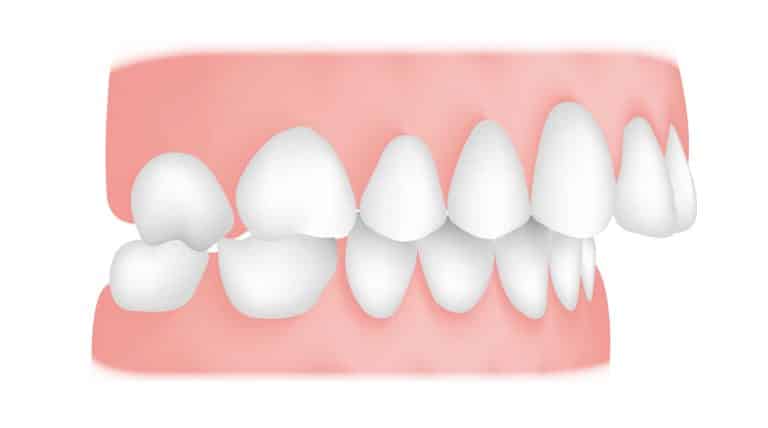What is malocclusion and how do I treat it?
Occlusion simply means the area of contact between teeth. More technically, it is the relationship or alignment between the maxillary (upper) and mandibular (lower) teeth when they come into proximity either during chewing or at rest. Ideally, your teeth should fit easily within your mouth without any crowding or spacing. Also, none of your teeth should be rotated or twisted. For a normal, healthy occlusion, the teeth of your upper jaw should slightly overlap the teeth of your lower jaw so that the pointed ridges of your molars fit into the groves of the opposite molar.
Dental malocclusion is any deviation from an ideal occlusion and is the result of any type of misalignment problem. This can lead to more serious dental and oral health complications in the future if not corrected as soon as is feasible.

Malocclusion can present in many forms. There are two main categories: tooth-related malocclusion (such as crooked, rotated, small or malformed teeth, and spaced teeth) and skeletal-related malocclusion – either overbite (prognathism), or underbite (retrognathism).
Overbite is when the upper arch is positioned in front of the lower arch, giving a presentation of prominent front teeth. “Horse-like look” is a common description of this type. Underbite is when the lower arch is positioned in front of the upper arch, giving a presentation of a prominent chin. “Bulldog look” is a common description of this type.
Malocclusion is usually an inherited condition. However, there are some circumstances or habits that may result in a malocclusion. These may include frequent use of a dummy/pacifier, thumb sucking after the age of three, prolonged use of bottle-feeding in early childhood, or any injuries that result in the misalignment of the jaw.
Malocclusion treatment options
Some people with mild malocclusion may not want or require any treatment. If you do require treatment for your malocclusion, we can offer you various options depending on the type and severity of your condition. These can include:
- Braces or Invisalign to correct the position of the teeth, treatments best provided by a specialist orthodontist. These malocclusion treatments will help position your teeth correctly in the jaw and in relation to opposing teeth. The time taken can vary, depending on the severity of the problem.
- Removal of teeth to correct overcrowding, which may or may not be done in conjunction with orthodontic treatment. The position of the teeth being removed and the position of the surrounding teeth will determine if extraction alone will be enough or if orthodontic treatment is required in conjunction with the tooth removal. This can be determined by a consultation with an orthodontist.
- Reshaping, bonding, or placing crowns or veneers on the teeth, which can be done by a general dentist or a specialist prosthodontist. This type of treatment will not correct the position of the teeth but can help to realign them by changing their size and shape with the chosen restorative material.
- Surgery to reshape or reposition the jaw which is most often done in conjunction with orthodontic treatment.
Any type of malocclusion will usually be diagnosed initially by your general dentist, who will then advise you of the suitable treatment options and, if needed, will refer you to an appropriate specialist (usually an orthodontist, at least at first). Early detection of malocclusion may help reduce the length and severity of the treatment needed to correct the problem.

